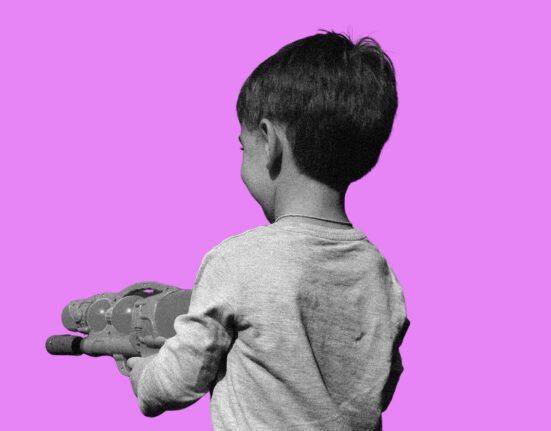When one thinks of psychology, the mind is immediately drawn toward the negative aspects of the human mind like anxiety, depression, OCD, etc. The DSM and ICD along with many psychiatrists, often look at psychology as a disease model. Even many known schools of psychology like Psychoanalytical and Behavioural psychology, focus more on the negative experiences of human beings that cause them distress. But in reality, Psychology is not just about negative experiences and healing unregulated minds. keep on reading to broaden your horizons on the scope of psychology.
Positive emotions, just like negative emotions, play a significant role in a person’s daily life. They are not just ‘happy feelings’ that we chase to feel fleeting pleasure. There are countless positive emotions that a normal person feels in his/her everyday life. Although they don’t use the same words as researchers use to describe various emotions, the words used by a normal person to describe his/her feelings offer us a solid foundation for positive emotions as they are frequently felt.
Some of the positive emotions felt by humans in plain language are, Joy, which is a sense of elation, happiness, and perhaps even exhilaration, is often experienced as a sudden spike due to something good happening; Gratitude is a feeling of thankfulness for something specific or simply all-encompassing. It is often accompanied by humility and even reverence; Serenity is a calm and peaceful feeling of acceptance of oneself; Interest is a feeling of curiosity or fascination that demands and captures your attention; Hope is defined as a feeling of anticipation and optimism about something positive in the future.
Martin Seligman, who is the pioneer of positive psychology focused on the optimistic aspect of what psychology is. He believed that we should look at psychological well-being as a need for every individual and not just the ones in distress. We should always be on the lookout to enhance the quality of our life. In one of his studies, he investigated his methodical theory regarding the reasons why happy individuals are happy.
Seligman found through comprehensive questionnaires that those who had identified and utilized their particular combination of ‘signature strengths’, such as humanity, temperance, and persistence, were the most contented and optimistic people. The virtue ethics of Confucius, Mencius, and Aristotle are combined with contemporary psychological theories of motivation in this conception of happiness. Seligman defined the Pleasant Life, the Good Life, and the Meaningful Life as the three cultivable dimensions of happiness.
When we learn to savor and value everyday pleasures like human company, the natural world, and our basic physical requirements, we begin to live the Pleasant Life. We can either advance to the Good Life, which is attained by identifying our particular qualities and strengths and employing them imaginatively to better our lives, or we can stay happily stuck at this stage.

According to Seligman, being in a condition of “flow” is a sign of living a successful life. A person is said to be in flow when they are so immersed in their job that they are unable to feel anything. The time slows down and they feel unsure of their location. Modern ideas of self-esteem contend that we can only find true fulfillment in life after we recognize our worth. Therefore developing our strengths in order to support the happiness of our fellow humans is one of the best ways to learn this value. The Meaningful Life, which is the final stage, is where we find true fulfillment by contributing our special talents to a cause bigger than ourselves.
The genius of Dr. Seligman’s theory is that it unites two diametrically opposed theories of what makes people happy: the individualistic theory, which emphasizes self-care and nurturing one’s own strengths; The altruistic theory, which emphasizes giving up one’s own interests in favor of the greater good of the society. Martin Seligman’s theory simply states that in order to live a fulfilling life, a person needs to tend to their own needs as well as be of help to society and family.
Seligman proposes two ways in which we can inculcate all three lives in our daily lives. The first activity includes designing a beautiful day as well as practicing mindfulness, and savoring to enhance a pleasant life and reach a more meaningful life. The second activity is called the gratitude test wherein the participants need to remember an important person who changed their life and who they have not thanked yet. This activity exists to inculcate gratitude.
Seligman has moved psychology away from the disease model to flower a new plant called positive psychology. According to him, the disease model focused on the negative aspects of a person’s psyche. It is bent towards finding what is wrong with the individual rather than making everyday life better. It acts as a victimizer and a pathologist. The disease model did not develop positive interventions to make people happier and that is why Seligman developed the theory of positive psychology. Positive psychology aims to enhance the daily life of an individual by incorporating positive psychology functions at the subjective, individual, as well as community levels.

According to Seligman, psychology should be a holistic approach being concerned with individual strengths as well as weaknesses. As we become part of an extremely fast-paced global village, competition for education, career, and social interactions increases. In such a chaotic environment, it is obvious that people may find little to no time to focus on their mental health. That is why. Seligman’s theory of positive psychology becomes the need of the hour to support and protect individual mental health by designing positive interventions to make everyday life more fulfilling.
He also goes on to explain two kinds of happiness, hedonistic happiness, and eudemonic happiness.
Hedonistic happiness is more of a western approach in which people seek characteristics of a pleasant life like chasing after things that make them happy. There is no flow in a pleasant life. One seeks instant gratification in hedonistic happiness. On the other hand, eudemonic happiness inculcates values of the good life and meaningful life. Meaning there is flow and spiritual attainment in eudemonic happiness. It is more of an eastern approach in which people are community-oriented rather than individual happiness.
The Broaden-and-Build Theory, one of the most widely accepted positive psychology theories, contends that happy emotions encourage and widen the thought-to-action transition. Children’s joy is a straightforward illustration of how the Broaden-and-Build principle operates. Children frequently engage in ‘play’. For instance, when they experience joy or any other pleasurable emotion. As a result, play helps kids form crucial social skills and fosters their imagination and creativity. They become more adaptable and social as a result of these resources, which leads to an increase in their happy emotions. Negative emotions appear to have a more opposite impact on thought-action repertoires than pleasant emotions.
We experience several detrimental physiological changes when we are stressed such as a racing heartbeat or high blood pressure. We immediately enter the fight-or-flight mode and frequently get stuck in this fruitless mental state. This unpleasant feeling keeps us from taking positive action. Stress can have a negative impact on our behavior, whether it prevents us from advocating for ourselves or from being productive. Positive emotions can have a significant impact on how we live our lives and how humans generally function, even though they may not directly affect our behaviors the same way as negative emotions do.













Leave feedback about this